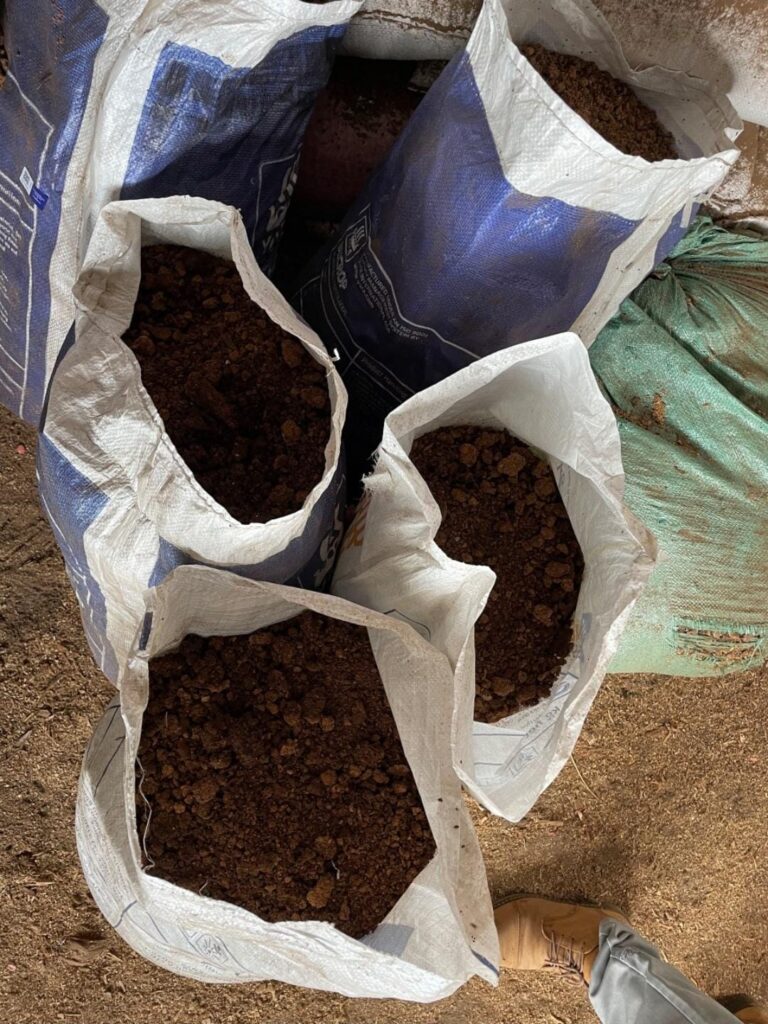
In March and April 2023, I went to Nairobi, to conduct fieldwork for my master’s thesis for the study programme Environmental Sciences at the University of Cologne in Germany. The fieldwork was supported by the “African Climate and Environment Center – Future African Savannas” (AFAS) project. My research focuses on exploring nature-based solutions (NbS) within Kenya’s cooking sector, specifically looking at sustainable biomass-based cooking solutions and their potential contributions to environmental protection and socio-economic development. I interviewed 12 stakeholders from research and academia, the private sector, associations and development work, all involved in some way in the development of biomass-based cooking solutions. In this blog post, I would like to provide an overview of the challenges faced by the Kenyan cooking sector and how these can be addressed through different alternative cooking solutions.
Kenya’s reliance on biomass energy for cooking remains significant and is even expected to increase due to population growth, urbanization, and limited access to cleaner energy sources (Namaswa et al., 2022; Okoko et al., 2017). Recent data from the Ministry of Energy in 2019 revealed that approximately 70% of households in Kenya rely on woodstoves, with a majority still using three-stone open fires. Other cooking technologies, such as charcoal stoves, LPG stoves, and kerosene stoves, make up the remaining percentages, with electrical appliances, biogas and liquid biofuels remaining marginal (MoE, 2019). In addition to the cooking technologies, the procurement of wood and production of charcoal mostly is very inefficient, resulting in low conversion efficiencies and increased health risks (Namaswa et al., 2022; Obure, 2022). Most charcoal producers use traditional earth kilns, which have a yield efficiency of only 10%, meaning that, for example, 100 kg of wood is needed to produce 10 kg of charcoal (Njenga et al., 2019). These practices along the whole value chain pose significant environmental challenges, including unsustainable fuelwood harvesting, deforestation, land degradation, biodiversity loss, and greenhouse gas emissions (Hollands & Daly, 2023; Karanja & Gasparatos, 2019).
These challenges are leading to the development of alternative solutions that use bioenergy more sustainably and efficiently. Sustainable biomass energy sources, such as briquettes and pellets from forest and agricultural residues, bioethanol, and biogas, have the potential to reduce pressure on forest resources and address pressing issues such as deforestation and land degradation. By reducing the demand for fuelwood and traditional kilns, these solutions contribute to the preservation of Kenya’s forests and woodlands. This, in turn, helps safeguard biodiversity, mitigate greenhouse gas emissions, and maintain environmental health (Karanja & Gasparatos, 2019; Namaswa et al., 2022). The key to their success lies in environmentally friendly production methods that carefully select raw materials as well as production technologies (Okoko et al., 2017). In addition to the environmental benefits, sustainable biomass-based cooking solutions can improve the livelihoods of both rural and urban communities. Instead of relying on imported fossil fuel-based energy sources like kerosene and LPG, locally produced biomass energy supports job creation and income generation (Namaswa et al., 2022). Overall, these solutions align with Kenya’s socio-economic objectives as outlined in the Climate Change Act 2016 and the Nationally Determined Contribution (UNEP, 2019). Nationally Determined Contributions (NDCs) are at the heart of the Paris Agreement and represent each country’s efforts to reduce national emissions and adapt to the impacts of climate change.
Briquettes and pellets are one alternative fuel to firewood and charcoal. They are made by compacting raw organic matter into moulds of shapes and sizes suited for use in a briquette stove (Okoko et al., 2017). In Kenya, sawdust as well as crop residues from the production of maize, cassava, sugarcane, potatoes, bananas, coconuts, macadamia nuts or avocados are among the materials that are converted to fuel. Fuel briquettes are cheaper and burn cleaner, more evenly and for a longer period than wood fuel. Besides, briquetting organic residues contributes to cleaning the environment and closing resource use gaps (Njenga et al., 2019). Photos 1 to 3 show avocado residues and sawdust which are used or tested as raw materials for briquette and pellet production, and finalized pellets.
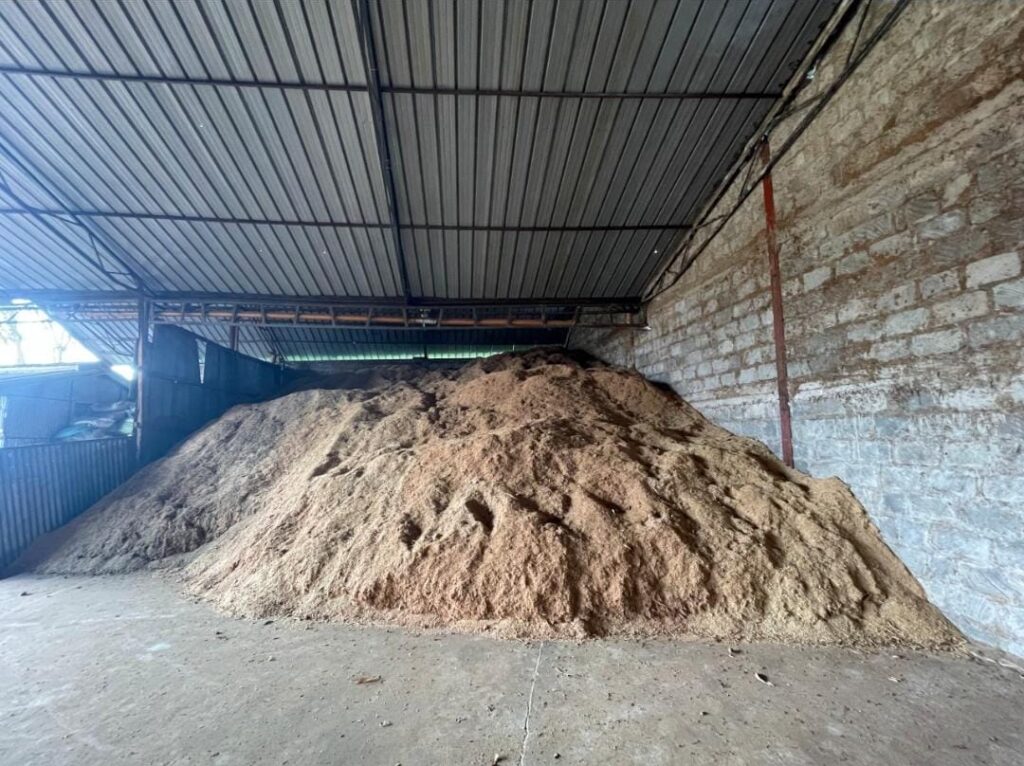
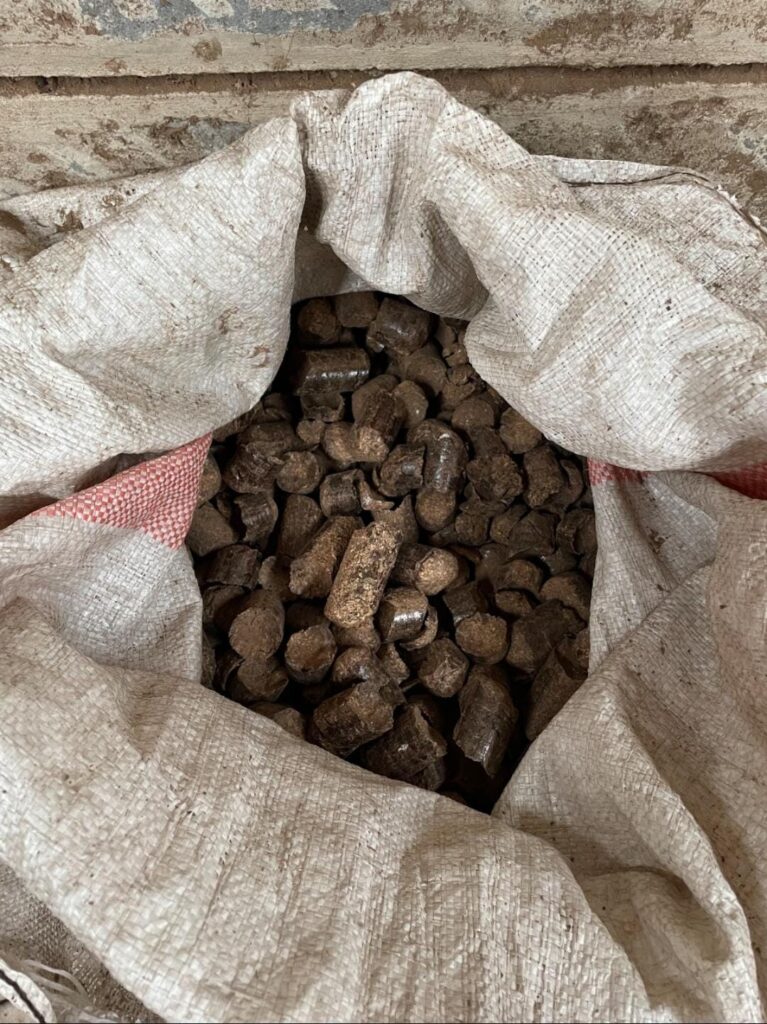
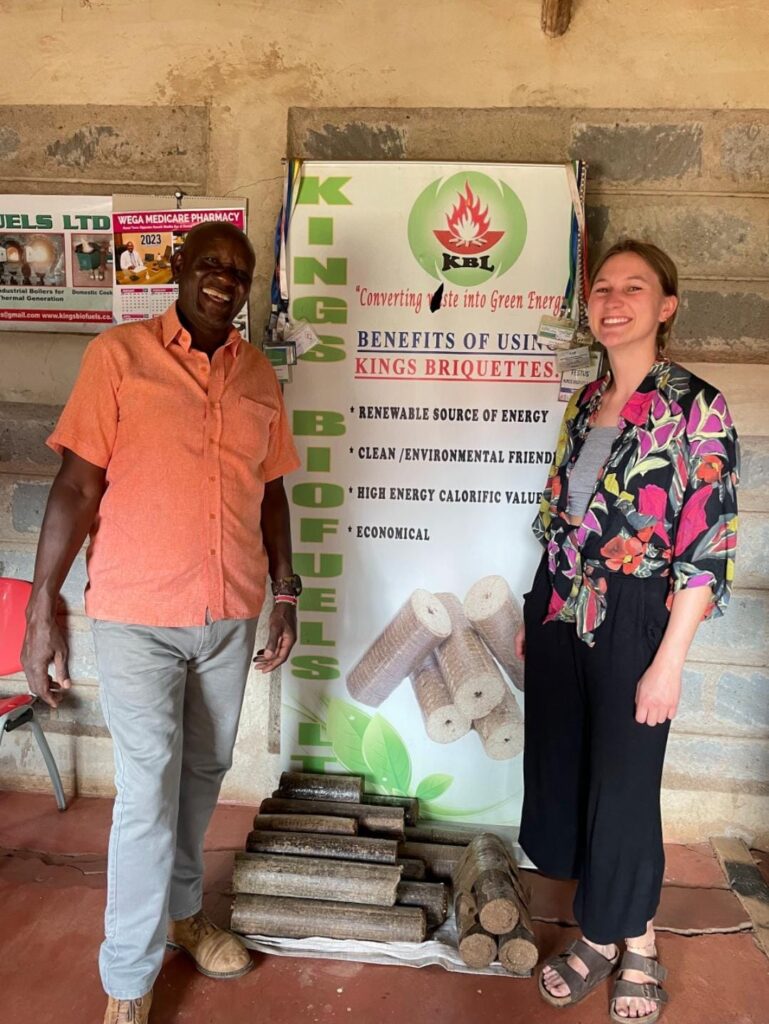
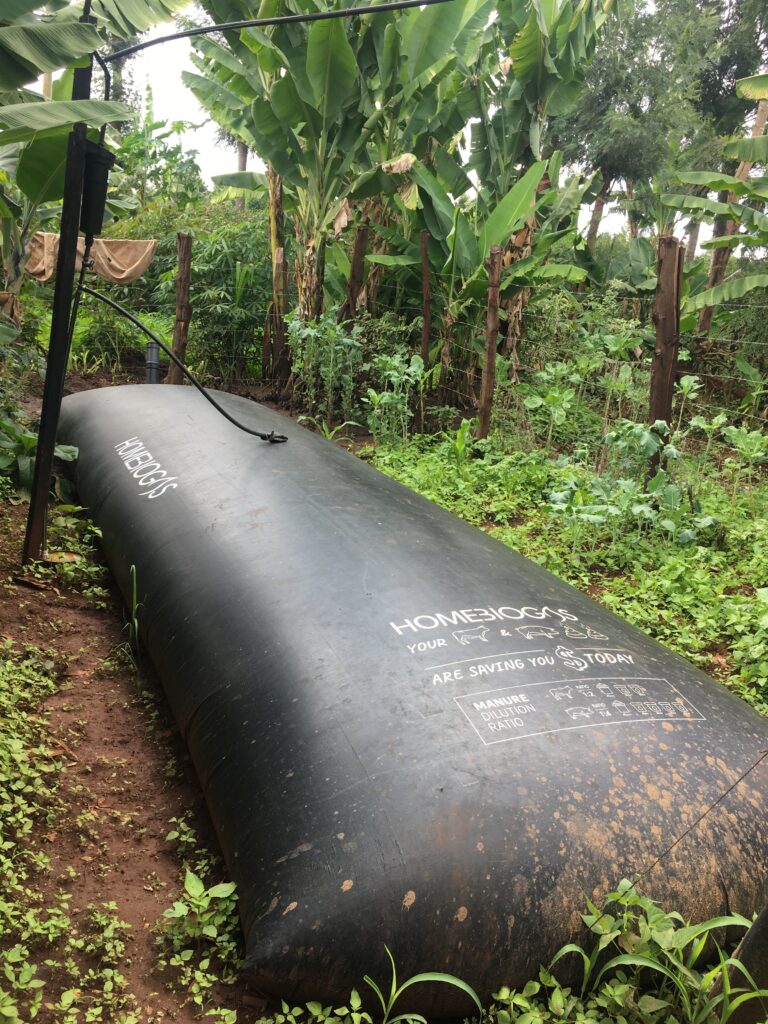
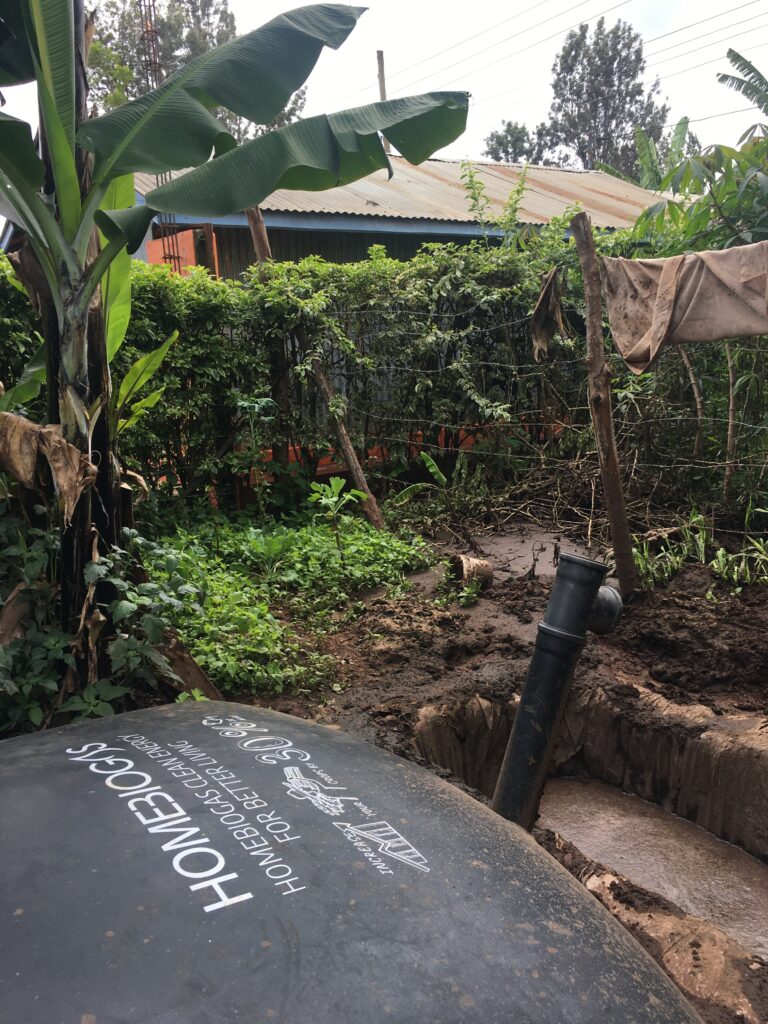
Kenya also has great potential for using biogas as a fuel, as most rural households already have the resources to operate a biodigester. Biogas is produced naturally by the anaerobic fermentation of biomass and solid waste. At the household level, manure from cattle, pigs and poultry can be fed into small collection systems that produce biogas for cooking, heating, lighting or electricity generation (Sovacool et al., 2015). Photo 5 shows a biodigester in the backyard of a rural household. The system measures 9×4 meters, requires two buckets of dung per day and produces biogas for five hours of cooking on two burners as well as 100 liters of organic fertilizer. Photo 6 shows the organic fertilizer coming out of the system and photo 7 shows a biogas cookstove, which is connected to the biodigester by pipes and uses the gas directly. The fertilizer is a natural by-product and can replace imported chemical fertilizer, having additional benefits to soil fertility and people’s livelihoods.
Another biomass-based cooking fuel that has become increasingly important in recent years is bioethanol. It is a liquid or gel-based fuel that burns cleanly, provides heat control, and has similar energy efficiency to gas when burned in a specially designed stove. Bioethanol can be produced from a variety of feedstocks, including maize, molasses, sugar cane and cassava (Clean Cooking Alliance, 2021). In Kenya, bioethanol is mainly used by households in urban areas, as distribution by the companies is currently focused on these areas. One interviewee representing a bioethanol company told me that they currently serve about 700,000 customers. They source 50% of their bioethanol as a by-product from sugar mills and have to import the remaining 50% from the commodity market as there is currently not enough feedstock in the country. Photo 8 shows a KOKO Point where people can draw bioethanol fuel and pay by mobile money.
As these examples show, there are several alternatives based on local resources that have the potential to make the cooking sector more sustainable. Although I have not discussed them in this blog post, it is important to keep in mind that they all face challenges in scaling up to achieve greater impact. Potential challenges include distribution networks, financial constraints for the households and businesses developing the solutions, or cultural aspects. A key message brought forward in my interviews is that there is not one perfect solution for all of Kenya, but that there are many good alternatives that complement each other depending on regional differences and household preferences.

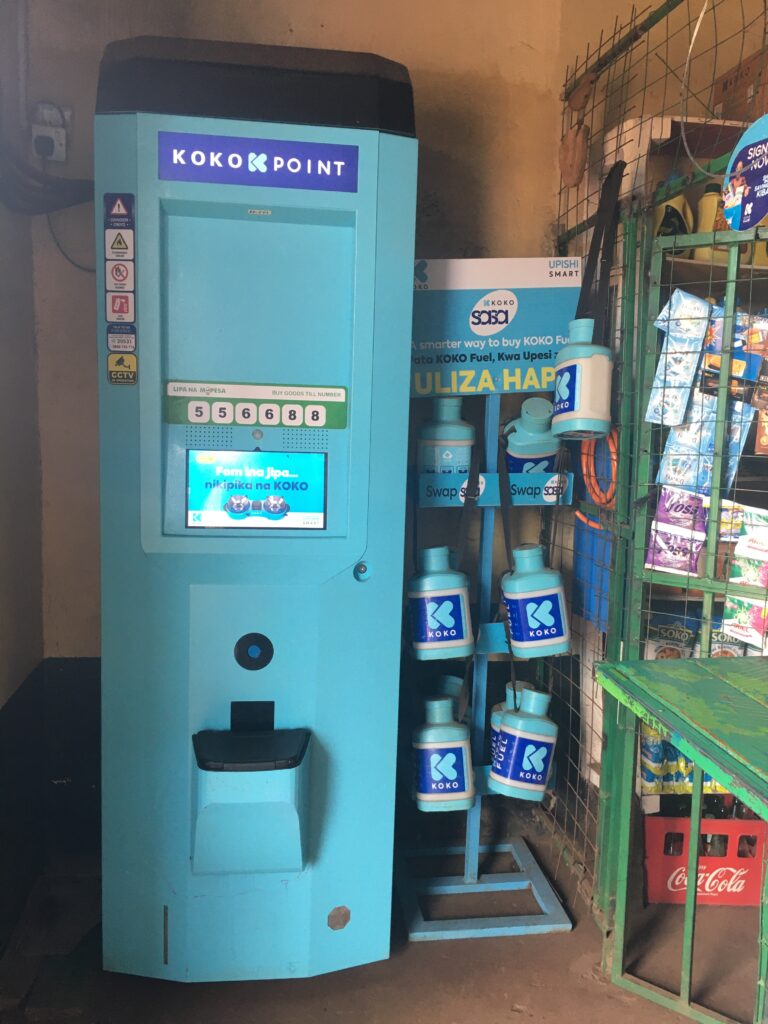
Bibliography
Information about the author:
Sophia Schneider is a student in the International Master of Environmental Sciences (IMES) at the University of Cologne. To conduct her research in Nairobi, she received a scholarship for research funding from AFAS.
(schneider.sophia96[at]gmail.com)